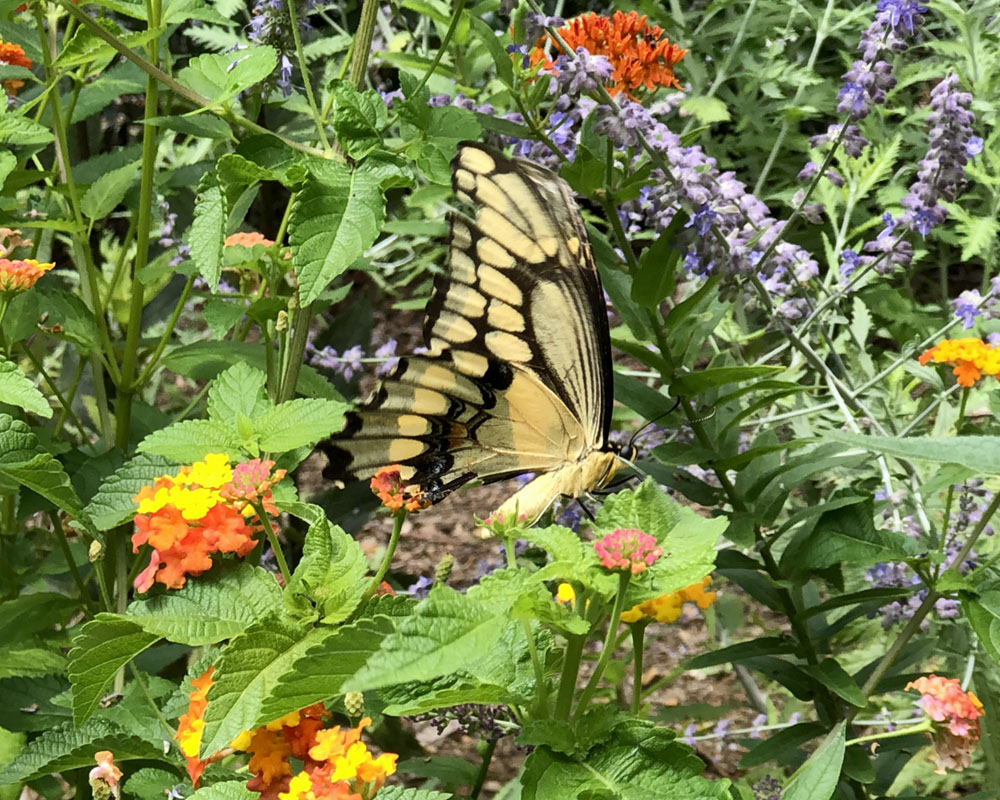
Giant swallowtail among lantana and Russian sage
Butterfly garden. Photo copyrighted by Mary Walton Upchurch
Later, as the guests were leaving, still exclaiming over the butterflies, I thoughtWhew! After all my work, the hit of the party was something that literally came out of the blue—something I could never have planned.
Yet I was wrong. I have since learned there are many ways to attract butterflies to the garden. The thrill of butterflies is that theydoappear unexpectedly and then dart away just as suddenly. But knowing what they need and providing it in your garden will attract many more butterflies than you would get by chance.
CHOOSE PLANTS THAT ATTRACT BUTTERFLIES
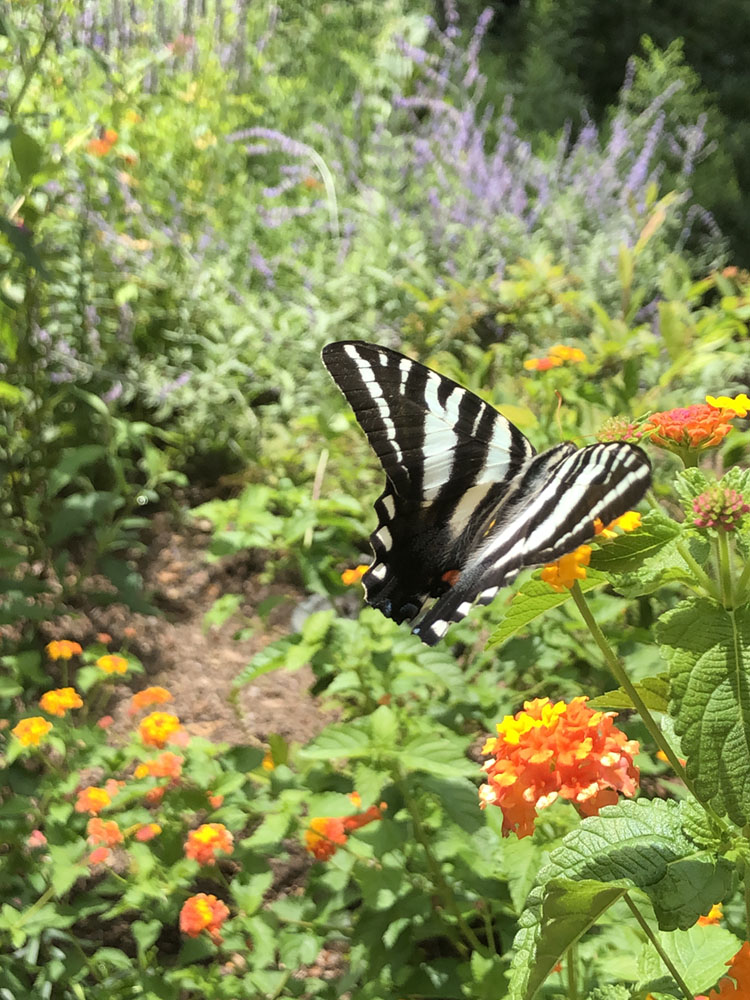
Zebra swallowtail on lantana
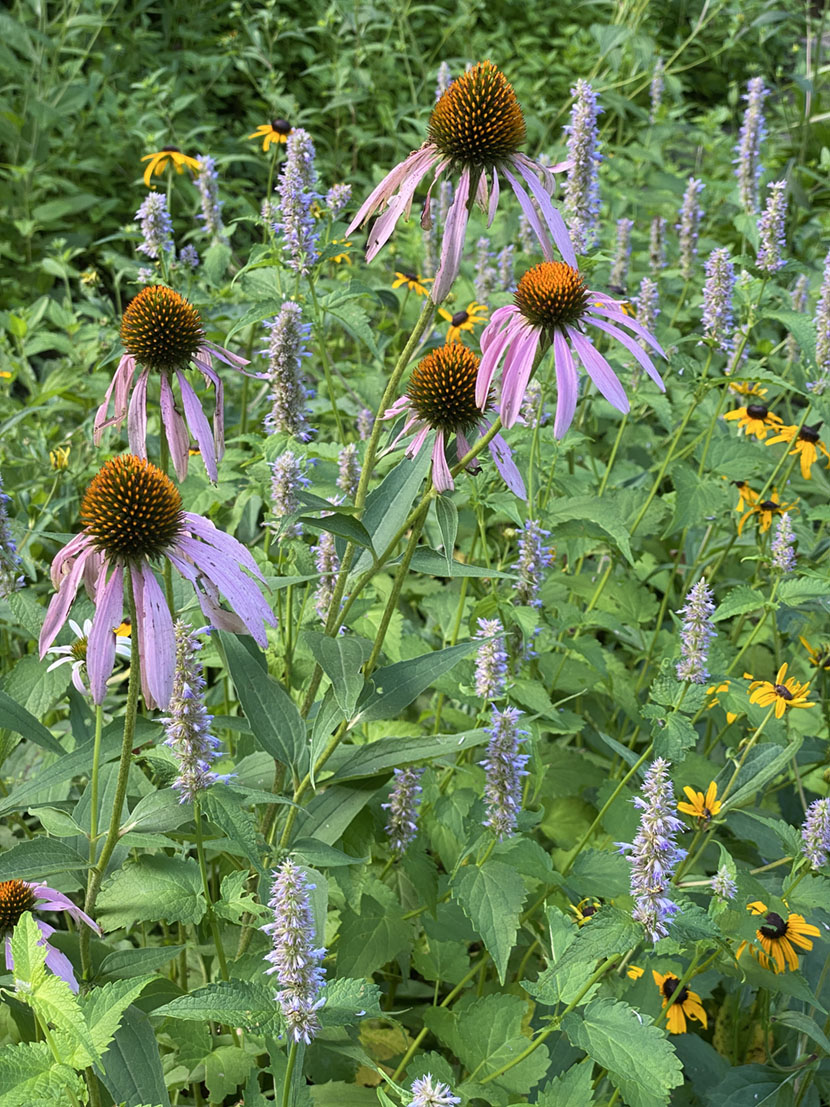
Purple coneflower, agastache, and black-eyed Susan in the author’s garden
Butterfly garden. Photo copyrighted by Mary Walton Upchurch
Butterflies need sun. Their wings receive heat to warm their muscles so they can fly. Butterflies also need calm air; they do not fly on windy days. If possible, locate your butterfly garden in a sunny area sheltered from the wind.
Butterflies eat nectar from spring, summer or fall-blooming flowers. Nectar plants for butterflies thrive in the sunny flower border. Cosmos and zinnias are popular annuals that attract butterflies. Select zinnias with a single row of petals, not the fat blossoms with many, multi-layered petals. The flat flower makes it easy for the butterfly to land and then probe each floret with its thin straw-like tongue. I recommend ‘Forecast’ zinnias.
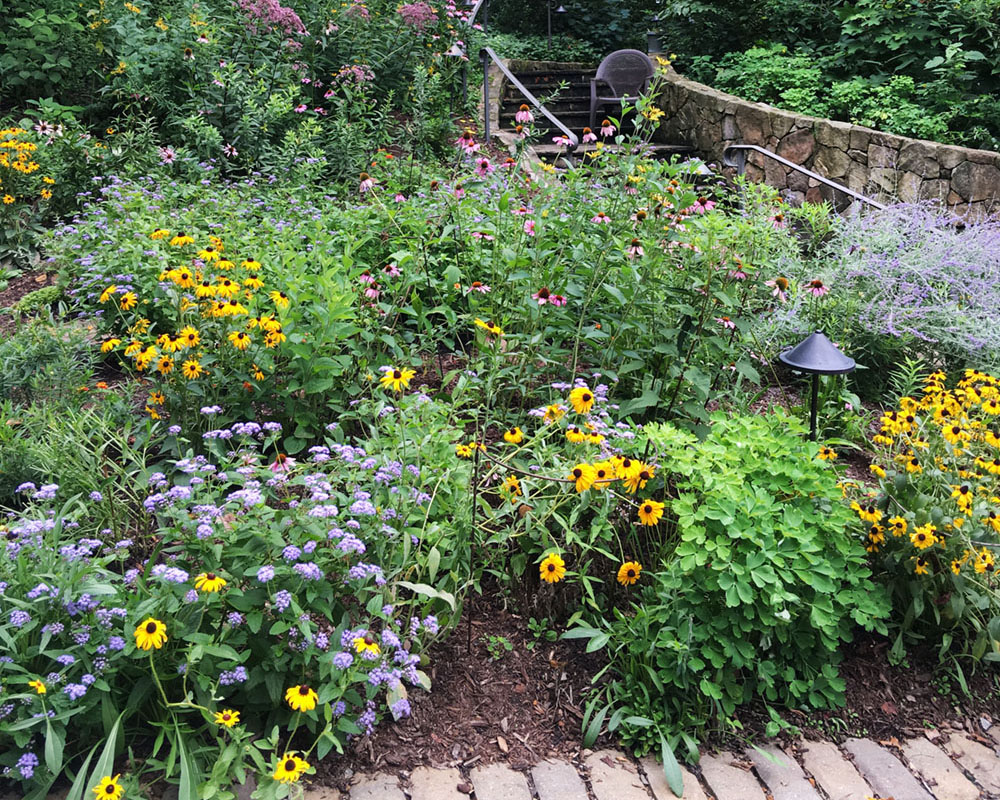
The author’s butterfly garden in western North Carolina
In the fall, stars of the butterfly border include joe-pye weed (Eupatorium maculatum) and asters (Aster sp.). And in the deep South, Mexican sage (Salvia leucantha) is spectacular.
IDENTIFY YOUR GARDEN GUESTS

Eastern tiger swallowtail on joe-pye weed
Butterfly garden. Photo copyrighted by Mary Walton Upchurch
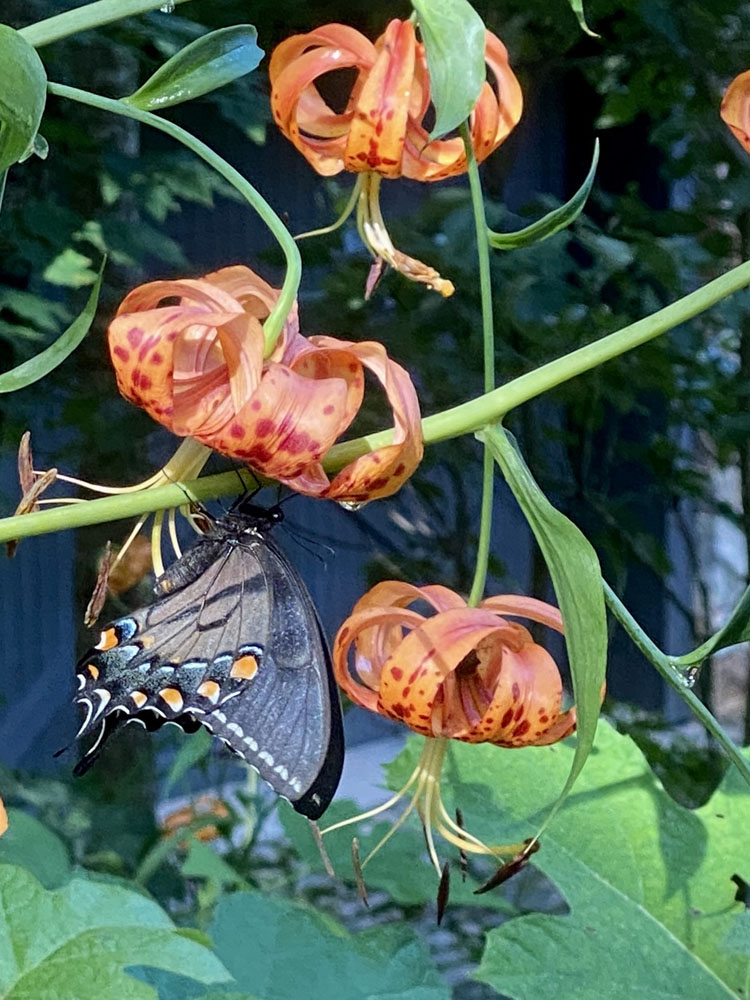
Spicebush swallowtail on Turk’s cap lily
Butterfly garden. Photo copyrighted by Mary Walton Upchurch
The iPhone has made butterfly identification so much easier than it used to be when the memory of a fleeting glance at a butterfly would fade before we could come indoors, find the identification book and leaf through it, bewildered by the multitudes of butterflies. Now we can snap a photograph of the butterfly with the iPhone and sit down at our leisure to compare it with photographs in a butterfly guide. A handy guide for the beginner is a guide to butterflies in your specific region. These guides, with laminated pages, fold out like a map, so you can compare several dozen common butterflies at a glance.
ADD TO THE ECOSYSTEM
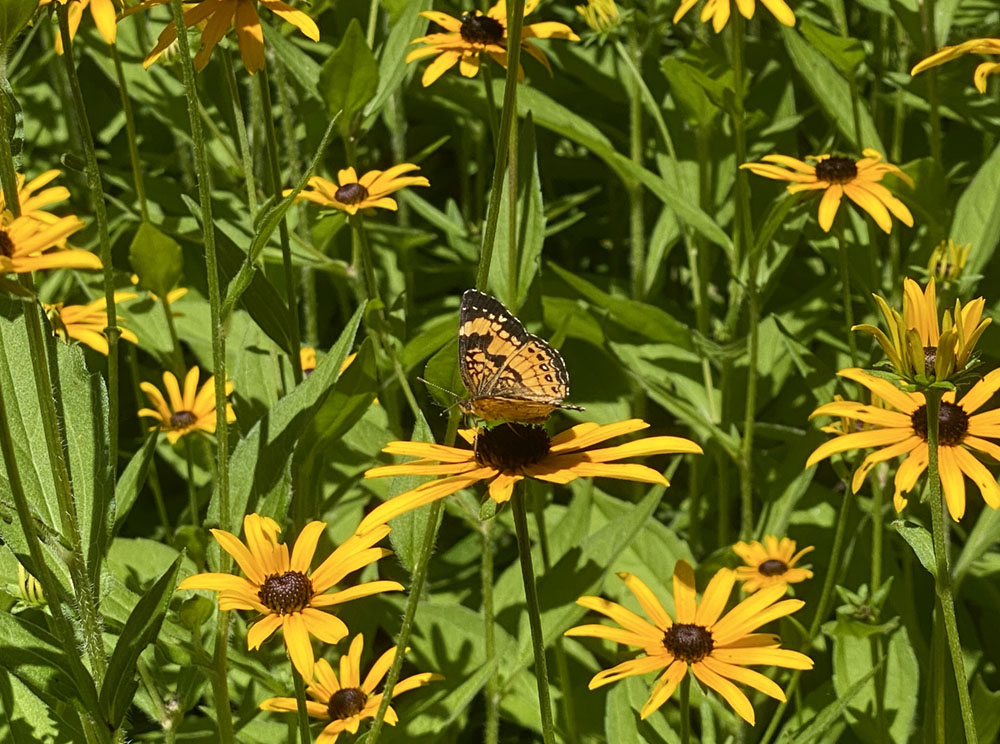
Pearl crescent on black-eyed Susan
Butterfly garden. Photo copyrighted by Mary Walton Upchurch
Once you name the butterfly, you can learn its host plants and add them to your garden so you can attract even more butterflies. You recall from third-grade science that butterflies have four stages in their life cycle: egg, caterpillar, chrysalis, and butterfly. The butterfly lays eggs on its specific host plant so that when the eggs hatch, the caterpillars are right there on their required food.
For example, the zebra swallowtail occasionally visits my garden, and it is such an elegant butterfly that I have added its host plant, the pawpaw tree (Asimina triloba), to my property to encourage more zebra swallowtails to come. I have also planted two kinds of milkweed (Asclepias tuberosa and Asclepias incarnata) to lure the monarch, the magical butterfly whose numbers are declining at an alarming rate. Whenever I discover monarch eggs or caterpillars on the milkweed in my garden, I feel a tiny surge of triumph: I am doing my part to help the monarch survive.

Monarch butterfly on agastache
Butterfly garden. Photo copyrighted by Mary Walton Upchurch
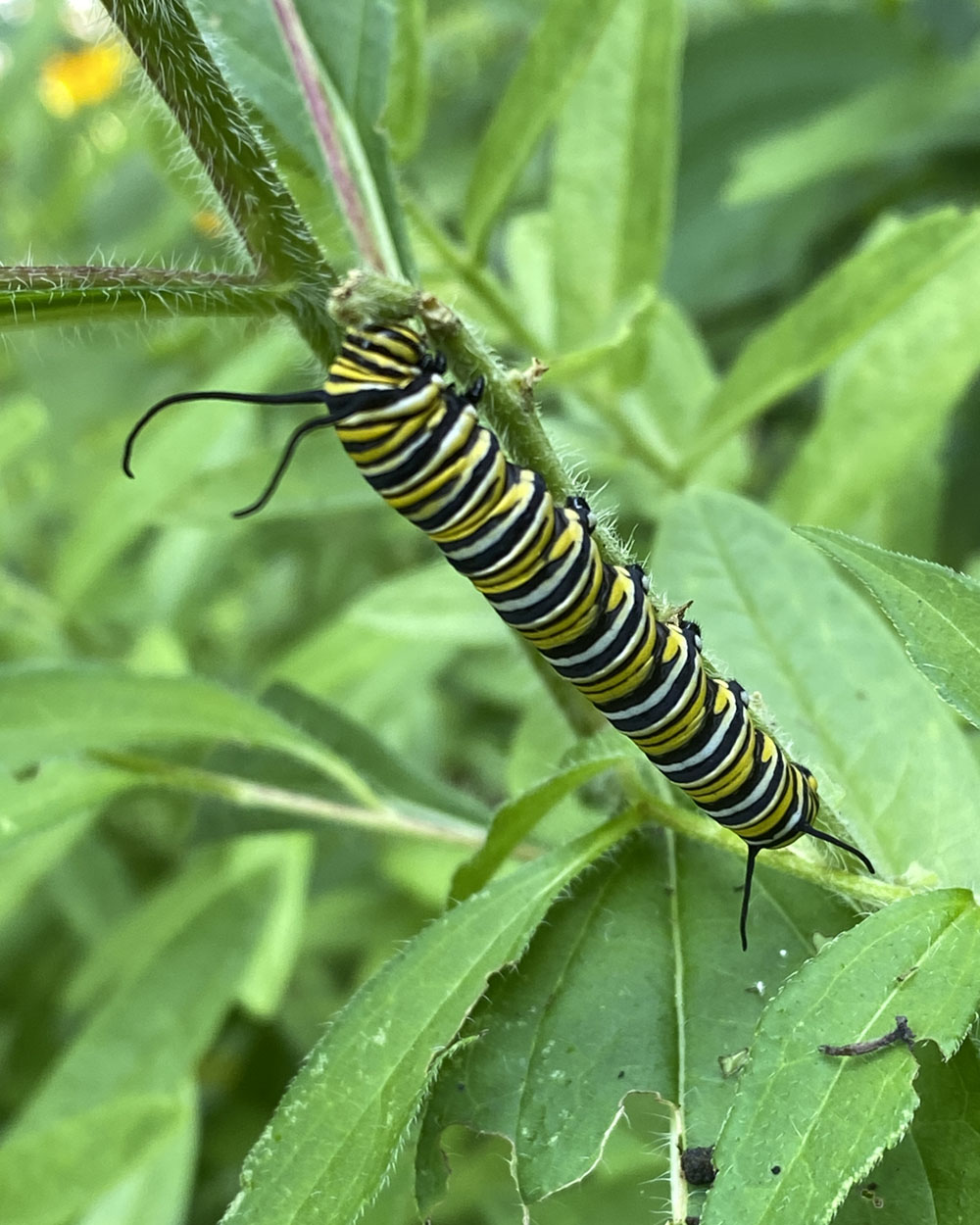
Monarch caterpillar on butterfly weed foliage
Butterfly garden. Photo copyrighted by Mary Walton Upchurch
Butterfly gardening also develops an appreciation for the ecology of the garden, the fragile interconnections between flora and fauna. No longer is my garden a two-dimensional canvas on which I paint flowers to please myself and impress others. No longer is it a battleground where I spray any insecticide, spread any chemical to make those flowers grow and the harmful insects depart. Now I see the web of life in the garden, how one thing affects others. When I see holes peppered in sassafras leaves, I don’t worry: I know this is the host plant for the eastern tiger swallowtail and I mentally cheer the caterpillars on. I am careful to preserve the wild violets that volunteer because I know they are the host plant for the great spangled fritillary butterfly.
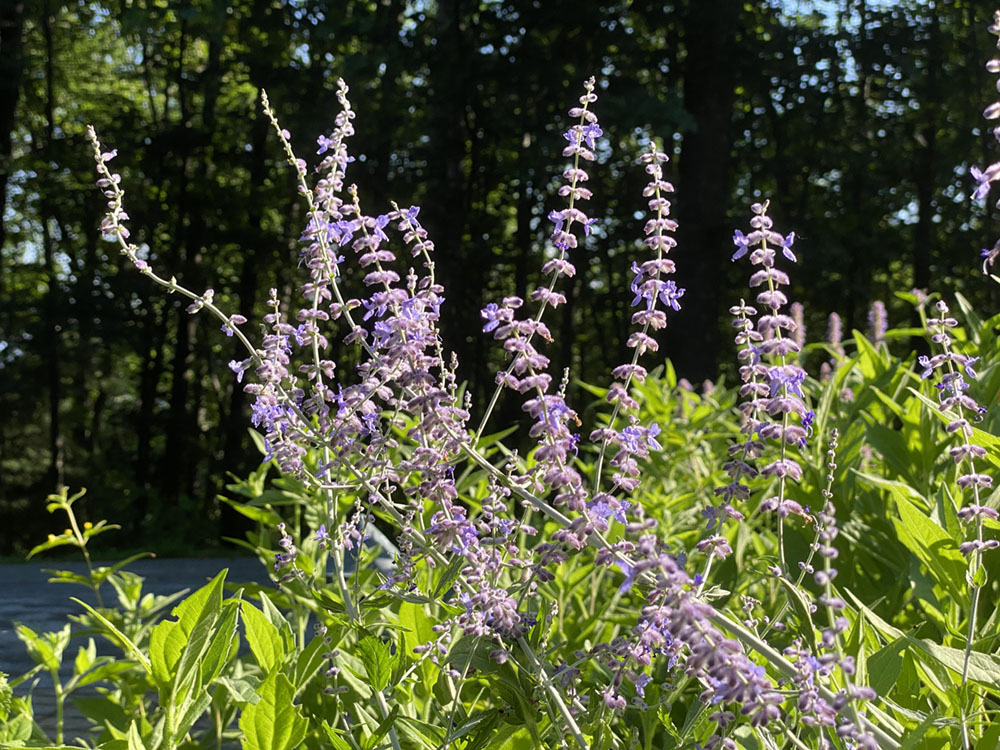
Russian sage
This makes me a better gardener—and perhaps a better person too.
Text and photography Mary Walton Upchurch © 2020
Author and gardening enthusiast Mary Walton Upchurch grew up in Montgomery, Alabama, and earned a degree in landscape architecture from the Harvard Graduate School of Design. For more than 30 years, she practiced in Montgomery as an award-winning landscape architect and wrote garden articles for a local publication. Today, she lives in western North Carolina where she built a home and garden on top of a mountain with panoramic views of the Blue Ridge Mountains.



